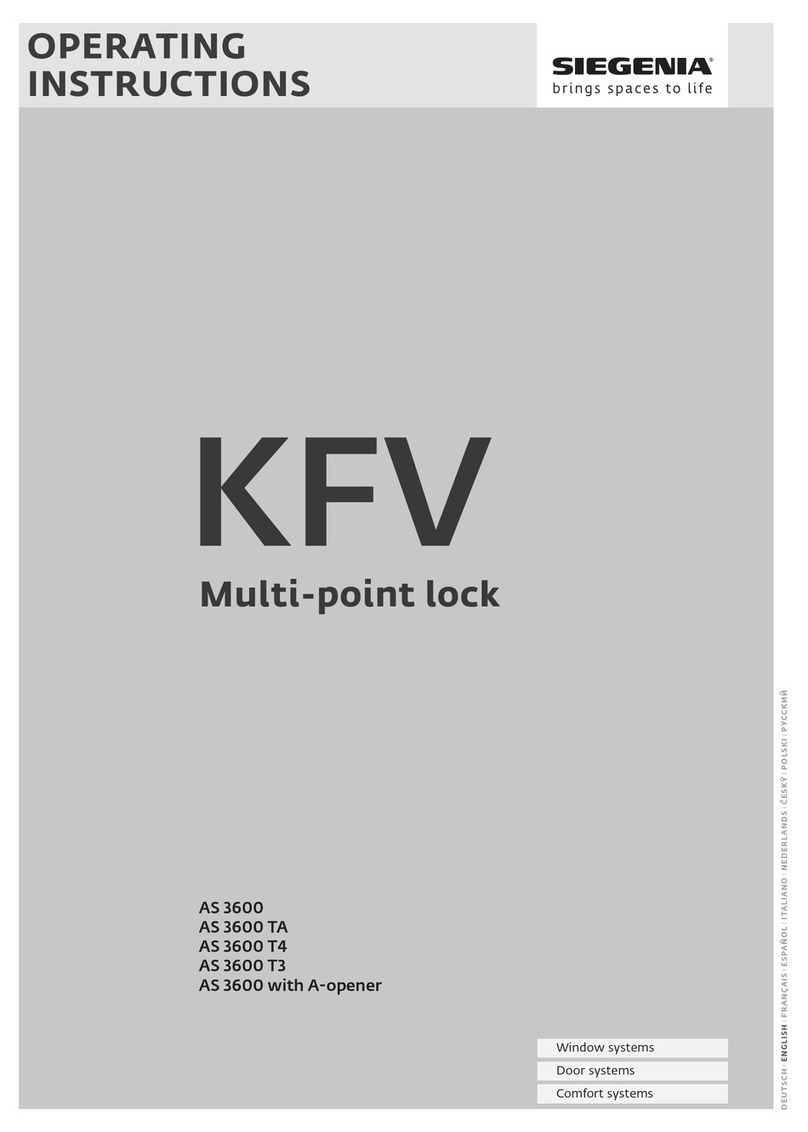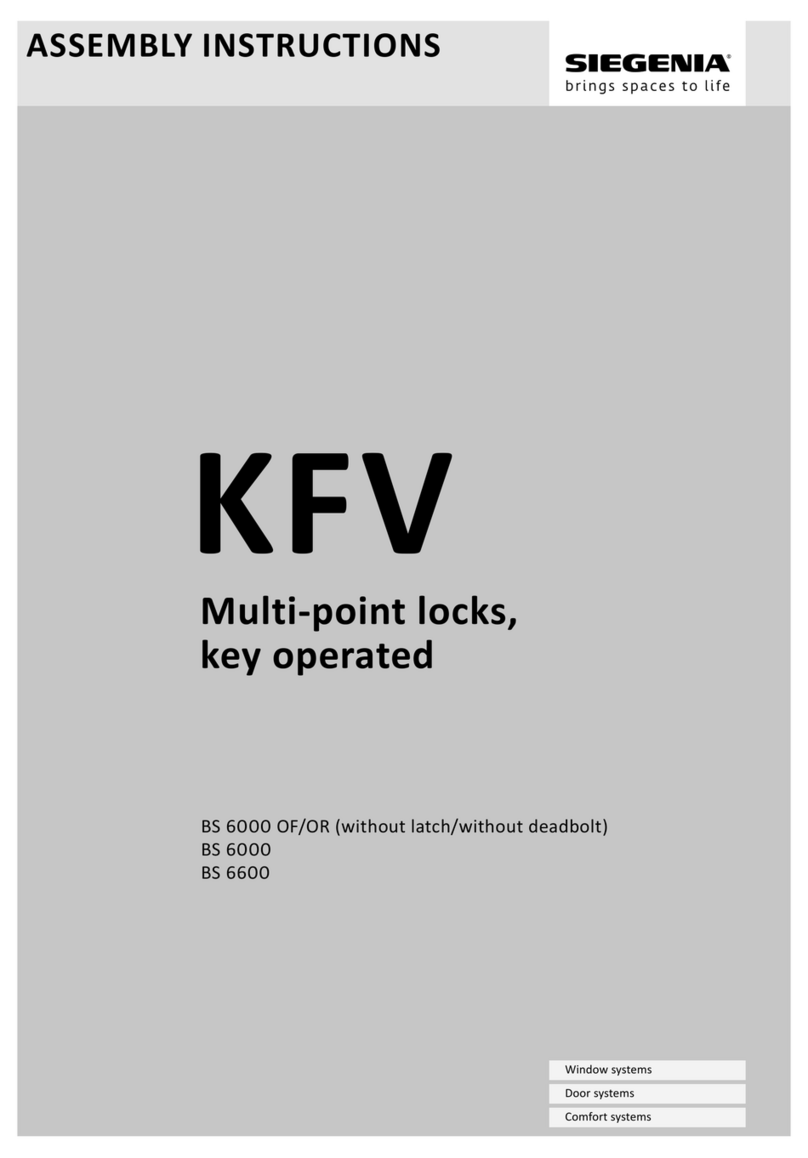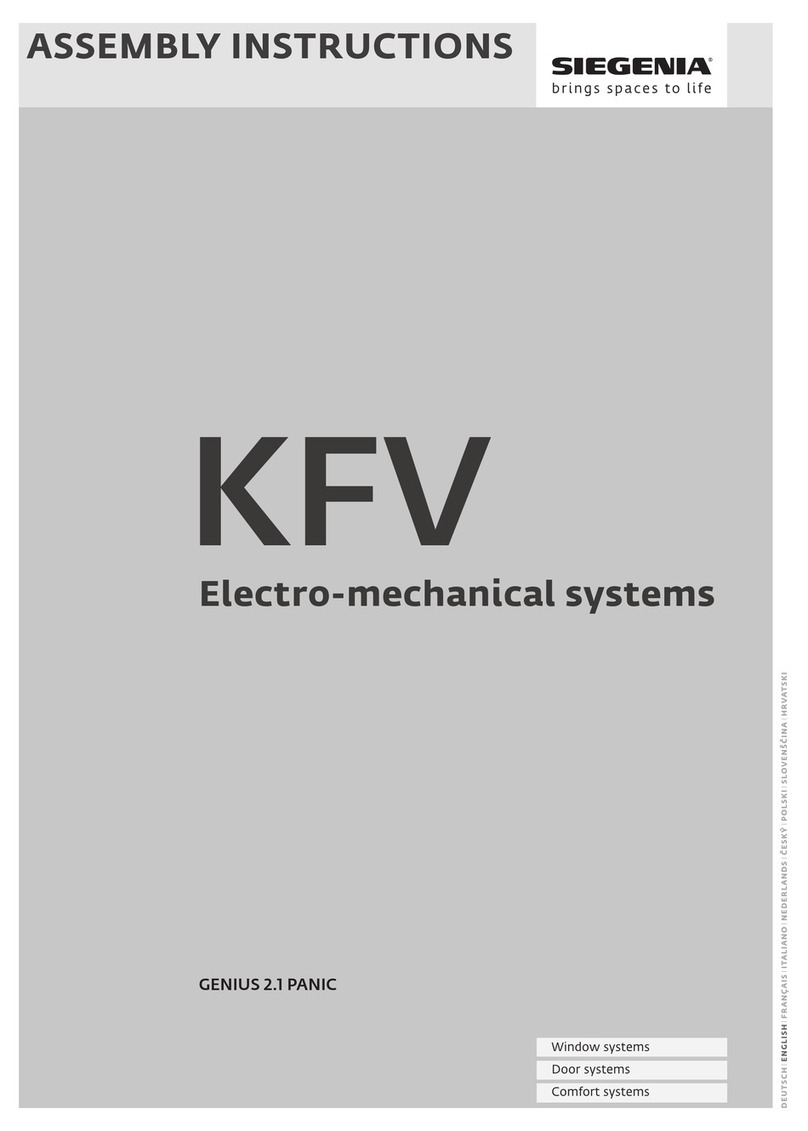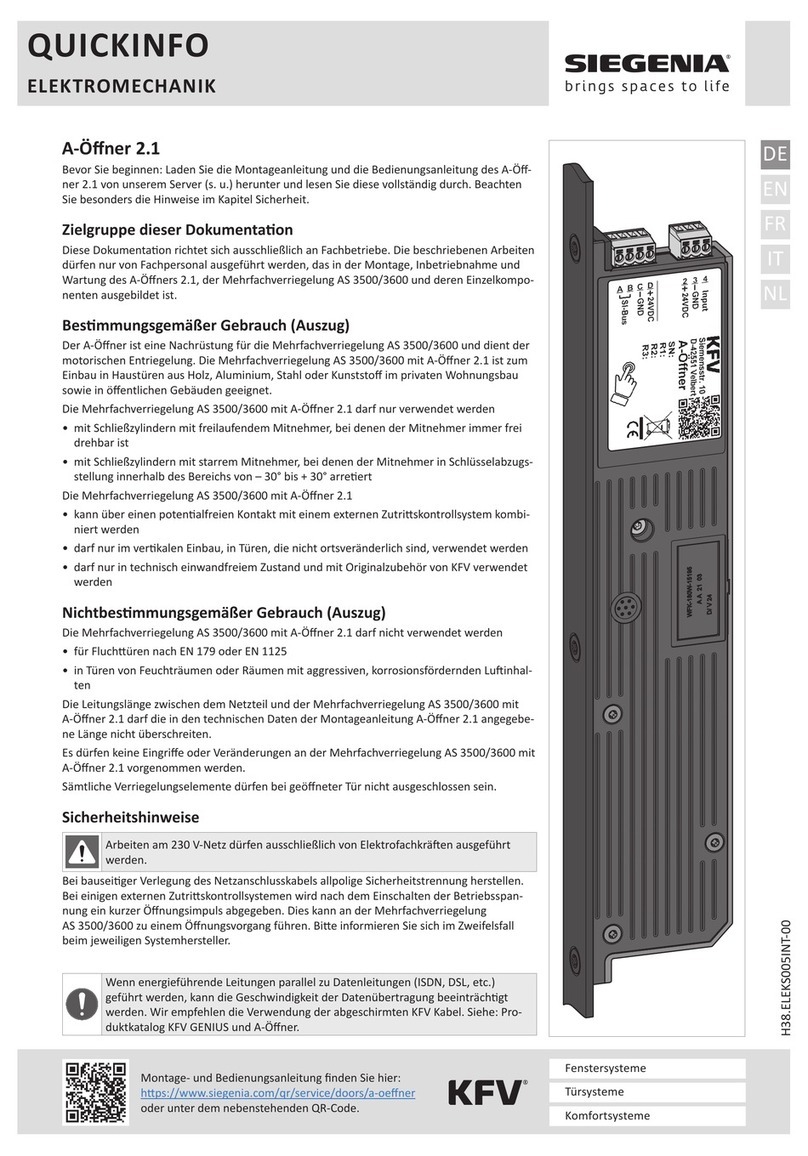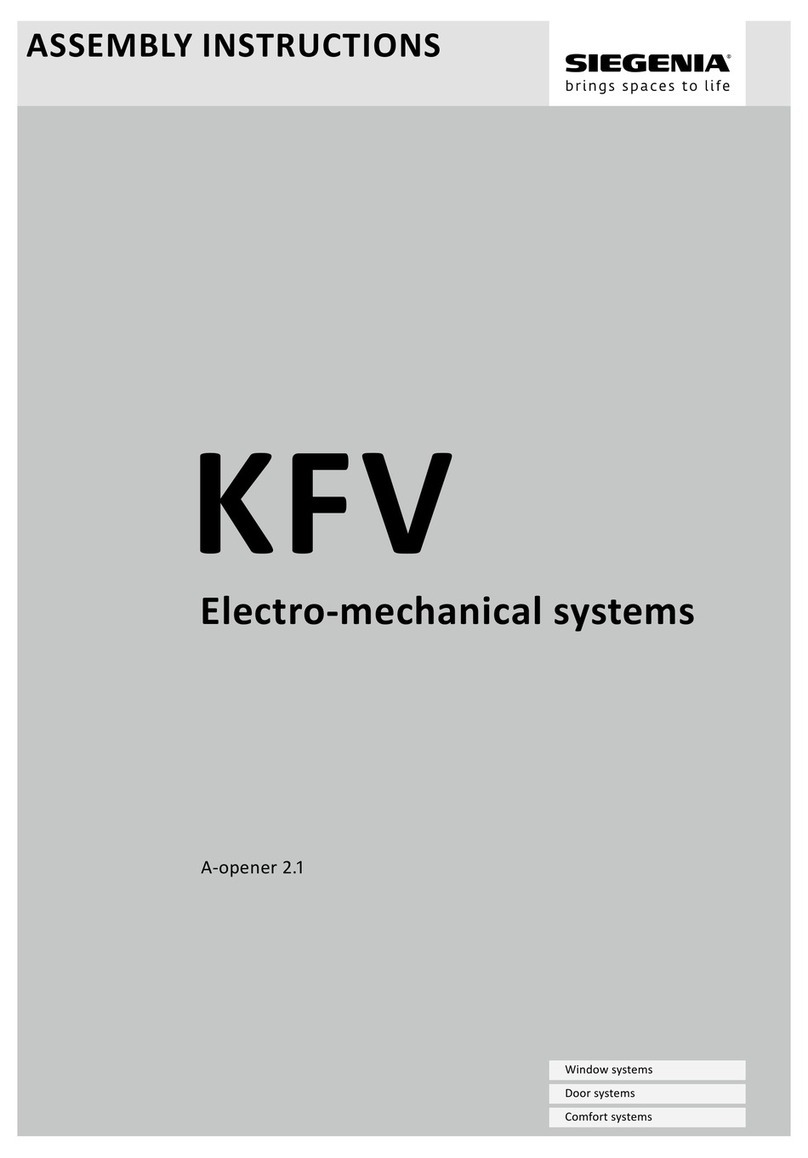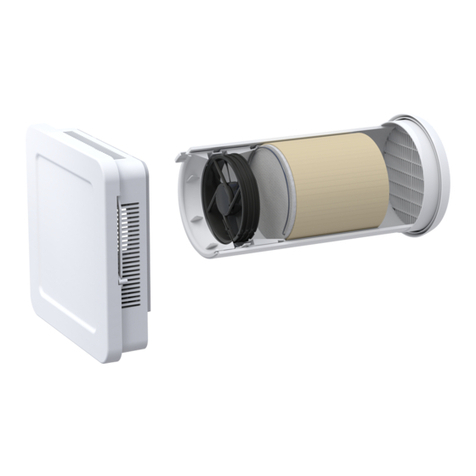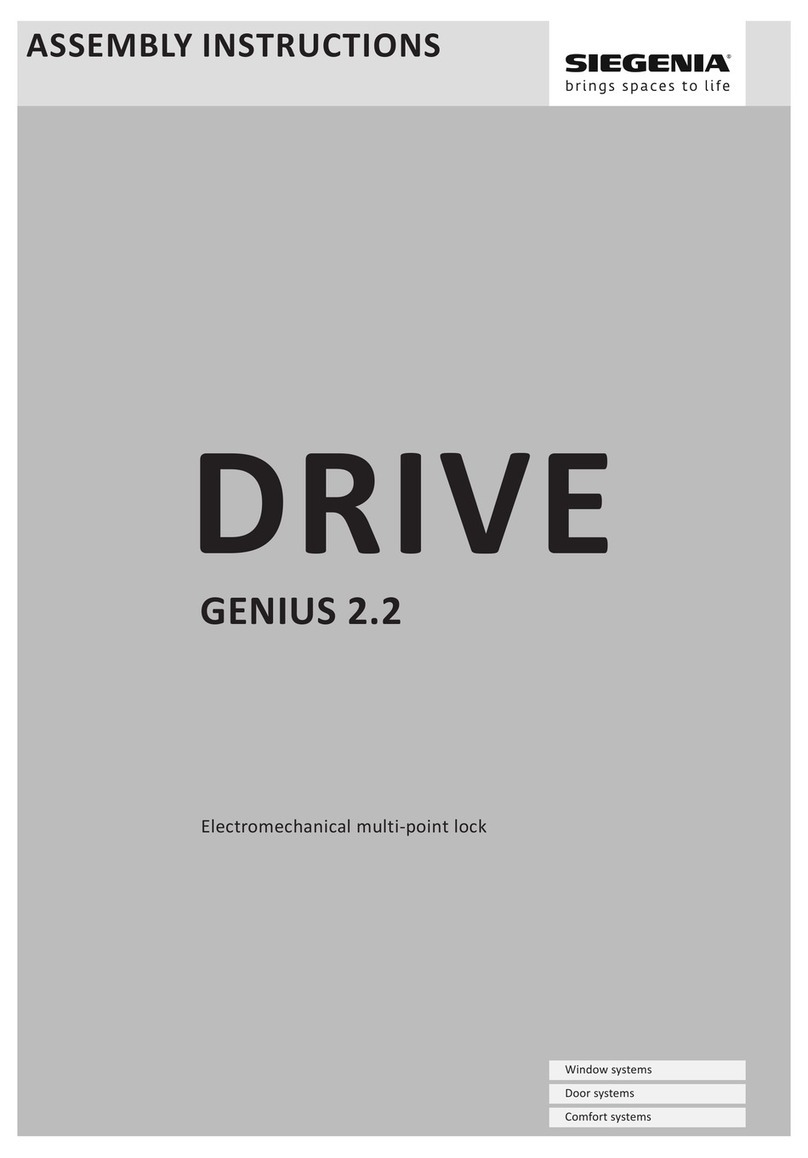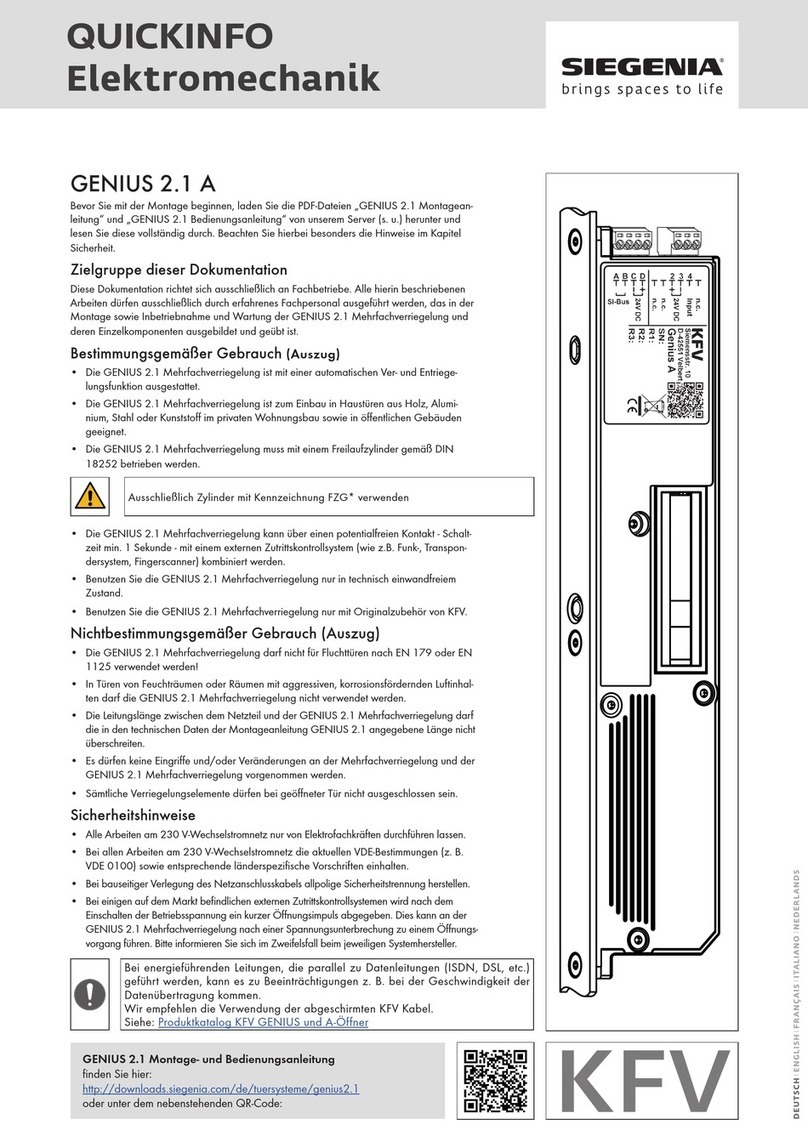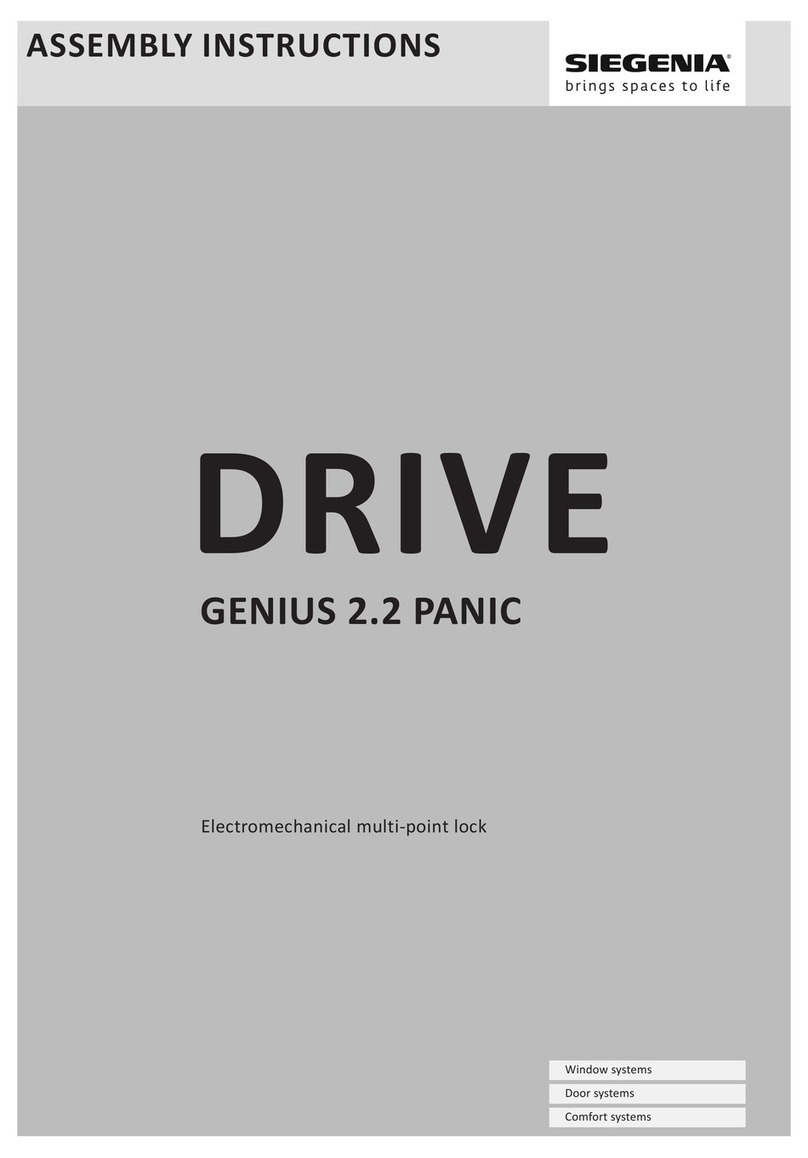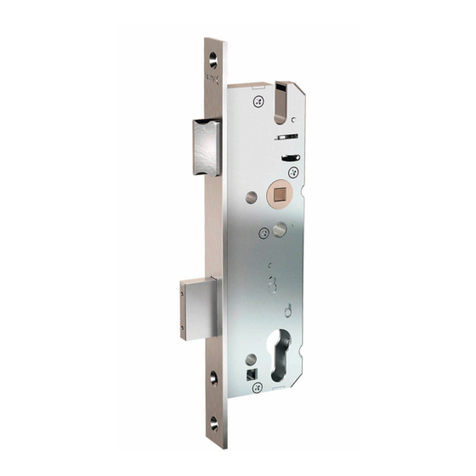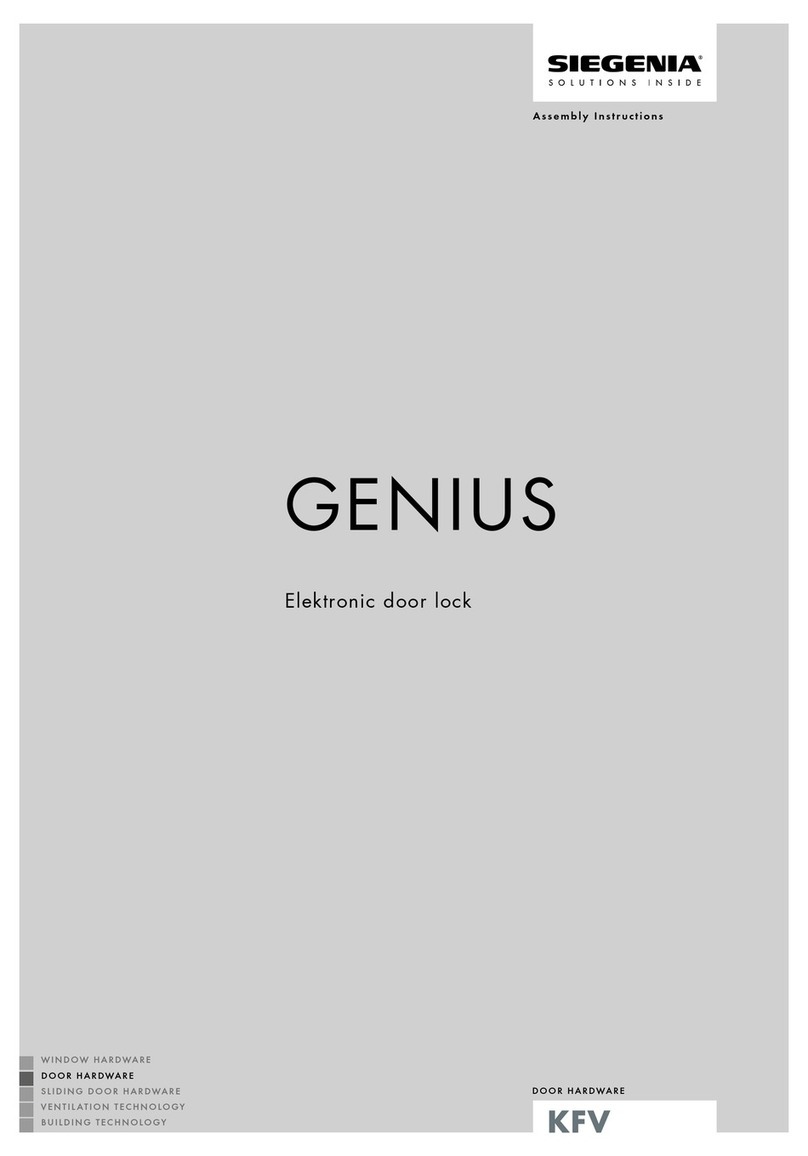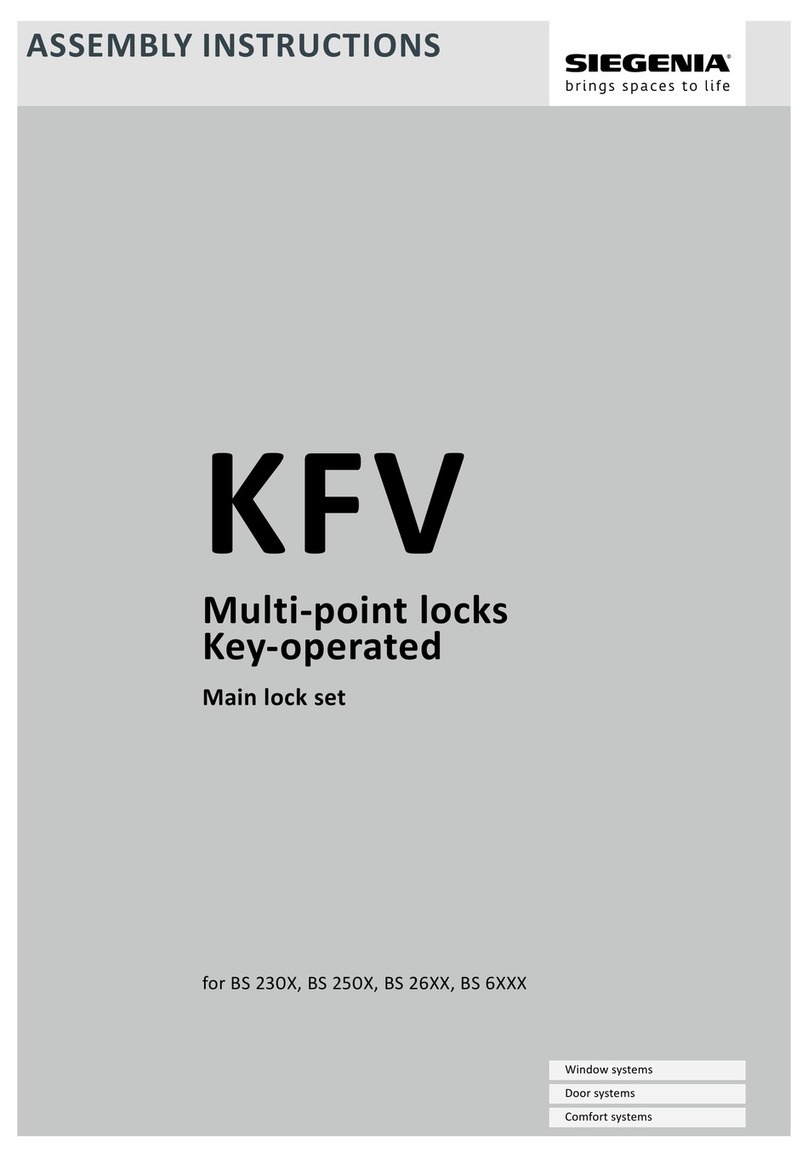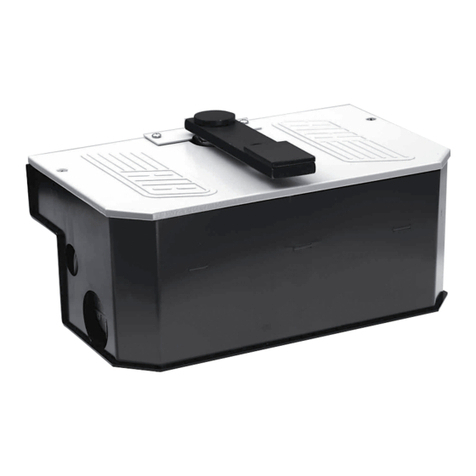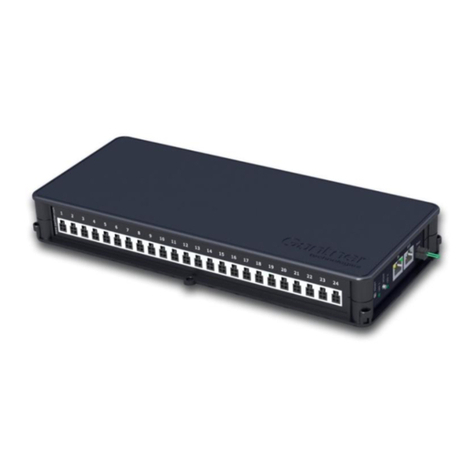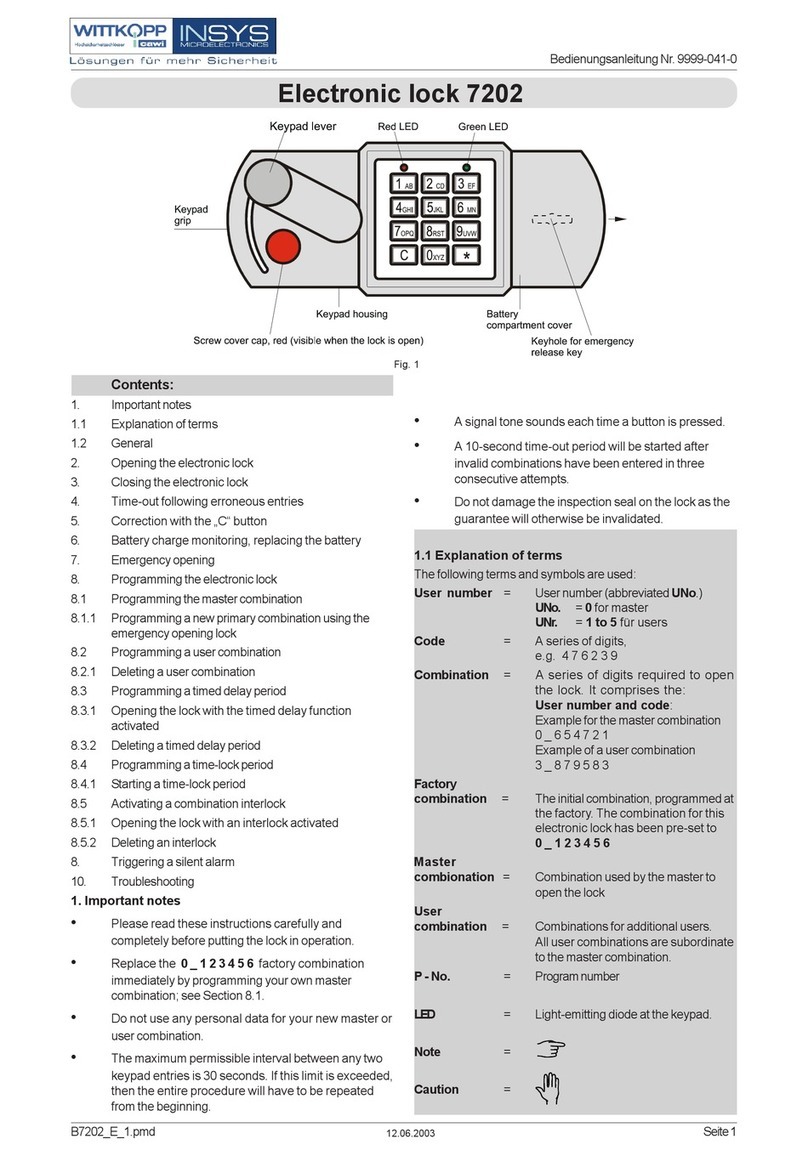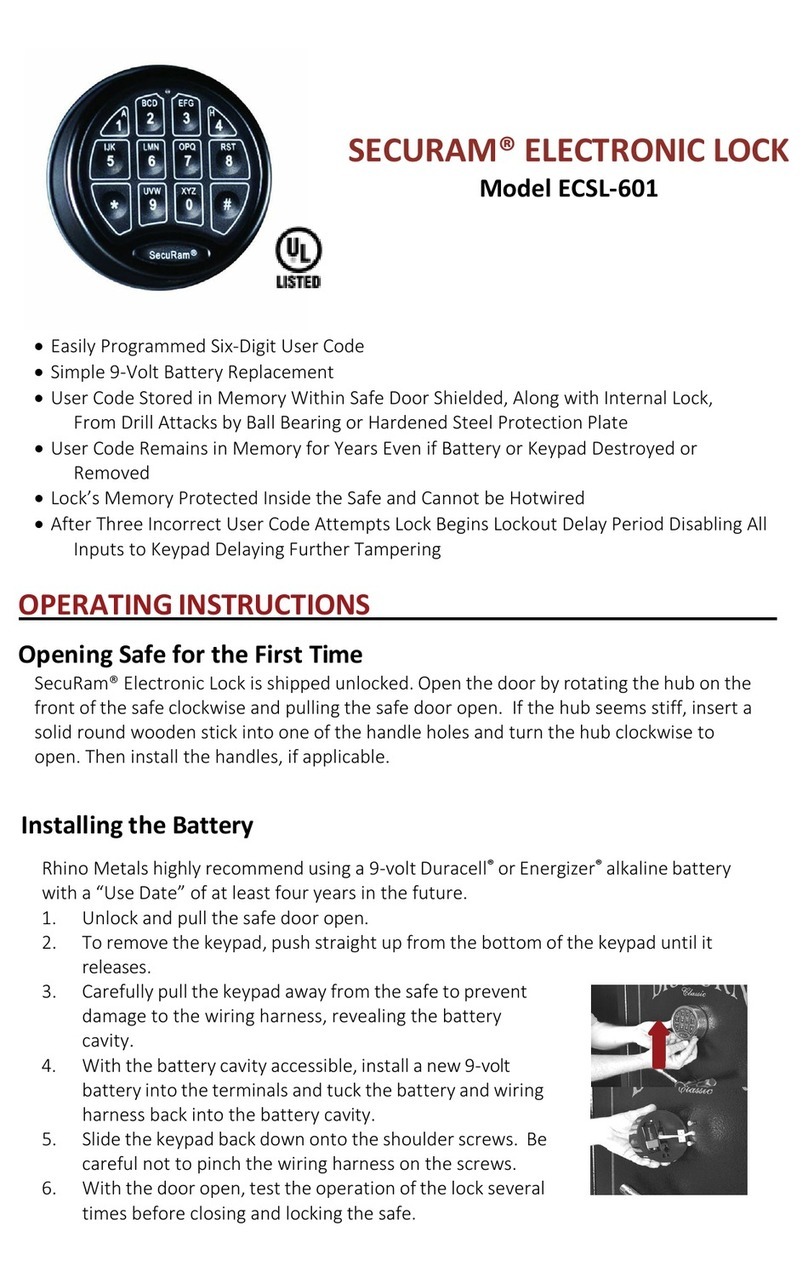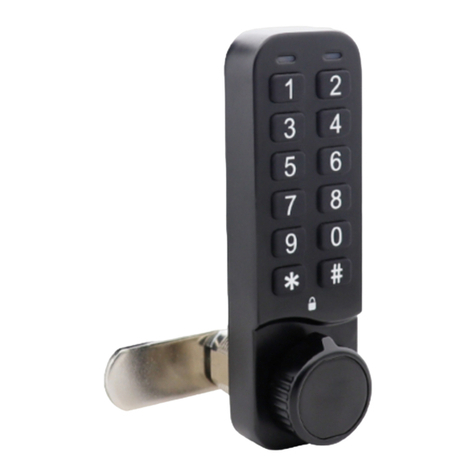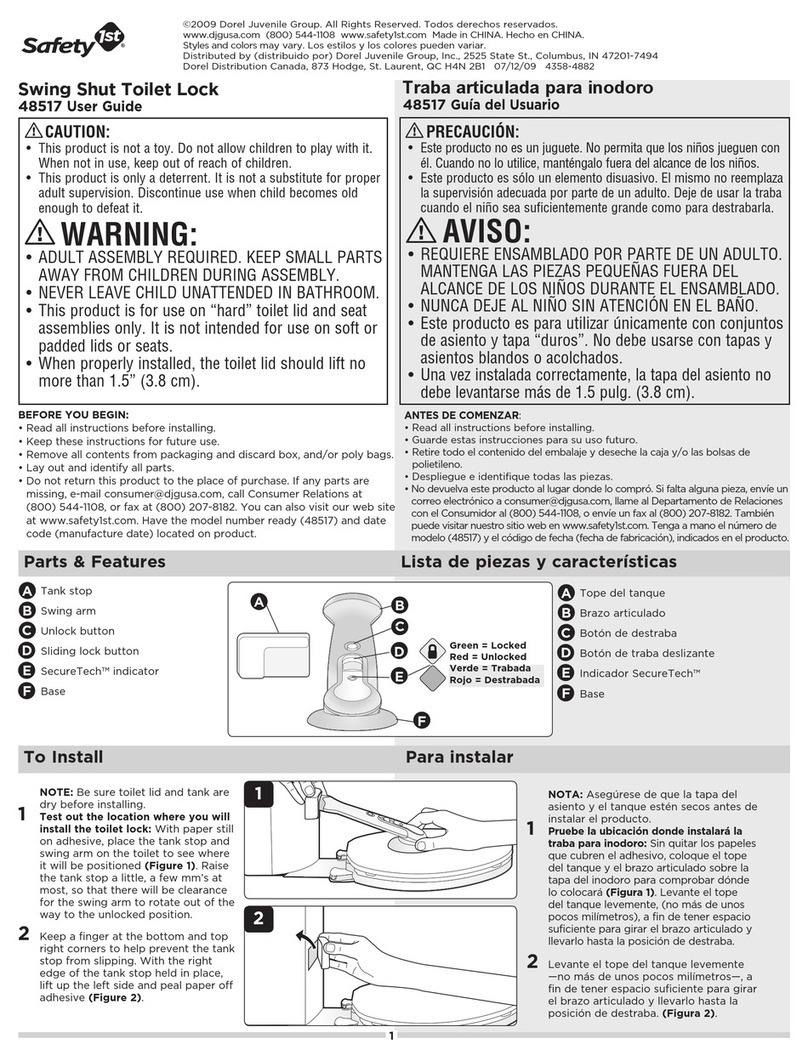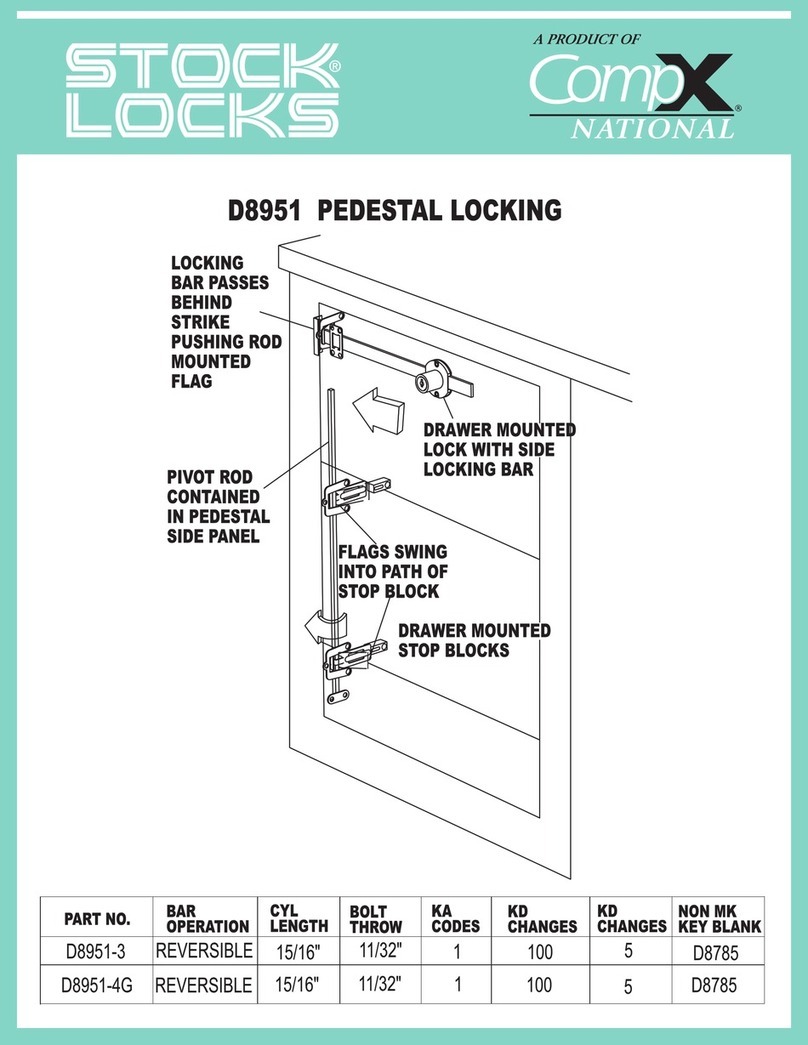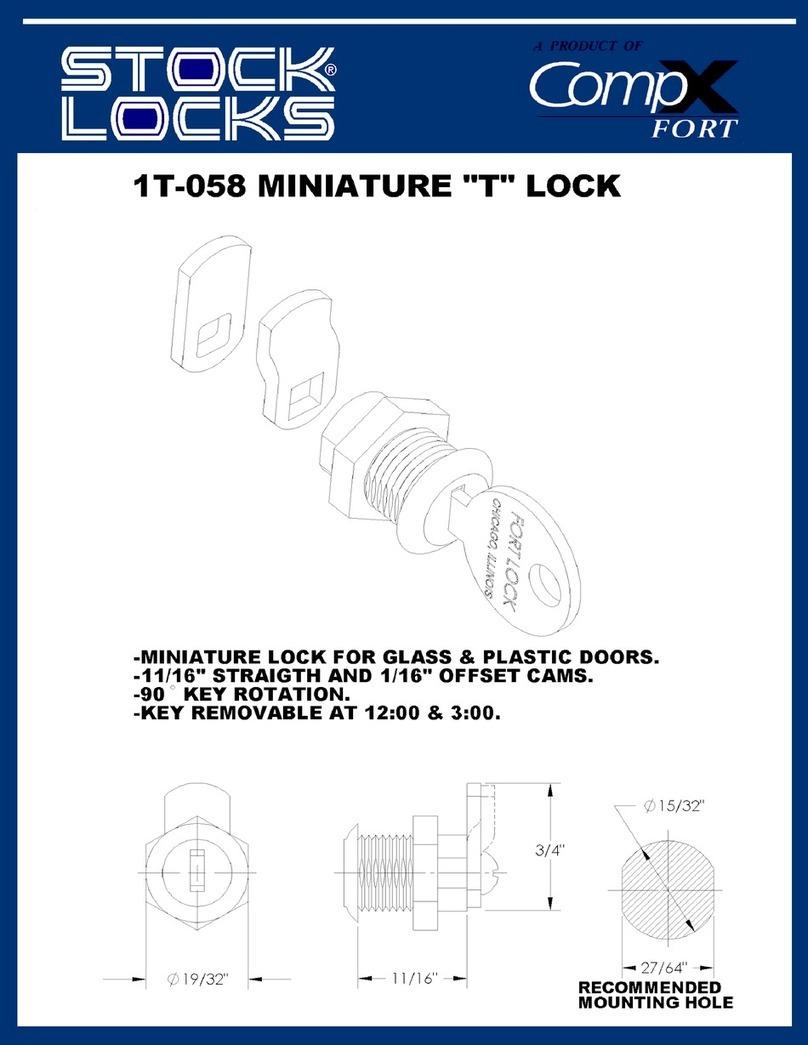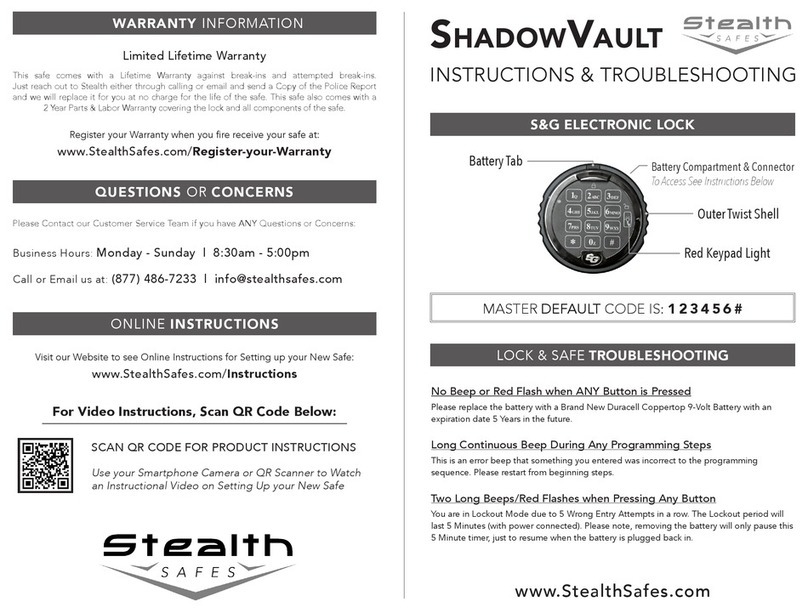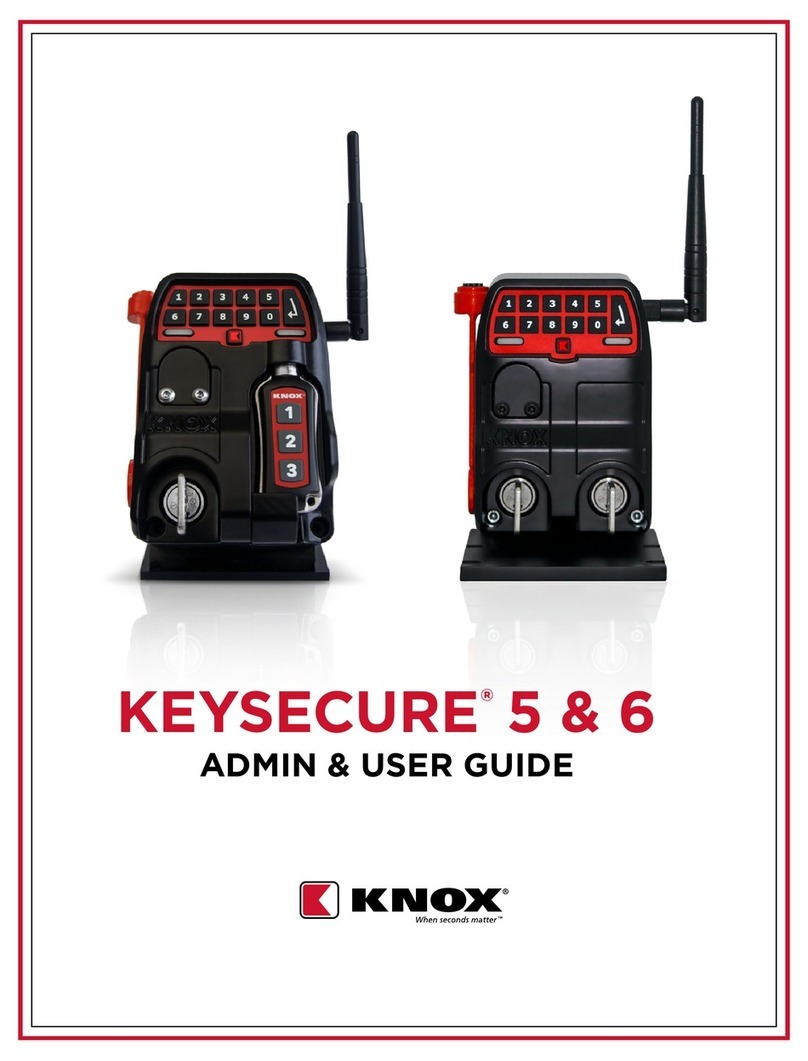1. Introduction
1.1 Validity
These instructions describe the installation of the magnetic
lock 111 and are valid unless revoked.
1.2 Target group of this documentation
These assembly instructions are intended for use by
specialists only. All work described in this document is to be
performed only by experienced professionals with training
and practice in the assembly, installation and maintenance
of KFV locking parts.
If the lock on an existing door needs to be replaced, the lock
can be replaced by non-specialists. The position of the striker
plate must be adapted accordingly.
1.3 Correct use
1.3.1 Installation location
• The lock is suitable for installation in single-sash and
double-sash doors with an inactive sash in permanent
buildings.
• The lock may only be installed in doors that have been
assembled in a technically sound manner.
1.3.2 Locking part and hardware
• The use of any additional devices to keep the door closed
(with the exception of a door closer) is not permitted.
Ifadoor closer is installed, it must not impede operation
of the door by children, the elderly or infirm.
• The locking elements must always engage freely in the
lock striker of the frame parts.
• Do not attempt to repair the lock. If the lock is damaged,
it must be replaced by KFV or repaired by a service agent
authorized by KFV.
• Only KFV frame parts may be used.
1.3.3 Transport
• Do not carry the door by the lever handle or hardware
when transporting it.
• Opening/closing/locking: It must be possible to open
and close the door easily.
1.4 Improper use
• The lock must not be used for escape doors.
• The lock is not designed to accommodate changes to
its shape or seal which arise as a result of differences in
temperature or changes to the building.
• The lock must not be used in doors for wet rooms or
rooms in which the air contains aggressive or corrosive
components.
• Foreign objects and/or materials which impede or
prevent proper use must not be placed within the
opening range, the locking system or the striker plates.
• The lock must not be tampered with and/or modified.
• Locking elements must not be misused to hold the door
open.
• Movable or adjustable locking pieces (e.g. deadbolt,
latch) must not be painted over.
1.5 Care and service instructions
• The magnetic lock 111 is maintenance-free.
1.6 Installation conditions and requirements
Local building laws and regulations must be observed before
and during door installation in addition to the following
requirements and conditions:
• Observe the milling dimensions
• Position the frame parts according to the specifications,
observing the horizontal and vertical adjustment closely.
• Before installing the lock, check the dimensional accuracy
of the door and the door frame. The lock must not be
installed if the door or the door frame is warped and/or
damaged.
• Install the lock and accessories according to our assembly
instructions.
• Remove any splinters from the lock mortise after milling.
• Once the lock is installed, do not perform mechanical
work on the door (such as drilling or milling). Do not drill
into or through the latch under any circumstances.
• Observe the specified positions and sizes when drilling
the holes.
• Follow the hardware manufacturer's instructions when
drilling the holes for the operating handle/hardware.
• Install hardware components and cylinder flush without
overtightening the screws or screwing them in at an angle.
• Fasten handle set by hand only and do not use force
when installing the spindle.
• Residual airgap, in accordance with DIN 18251-1, keep
a gap of 2 mm - 5 mm between the secondary sash and
the frame parts.
• Operating elements should not impede each other.
• Check that any existing block setting is packed correctly.
• Surface treatment of the door and door frame must take
place before the lock is installed. Subsequent surface
treatment can reduce the functional capacity of the hard-
ware components.
• Use only acid-free neutral-cure sealants to prevent
corrosion of components and/or the door.
1.7 Dimensions
All measurements are given in mm.
6KFV
Introduction
